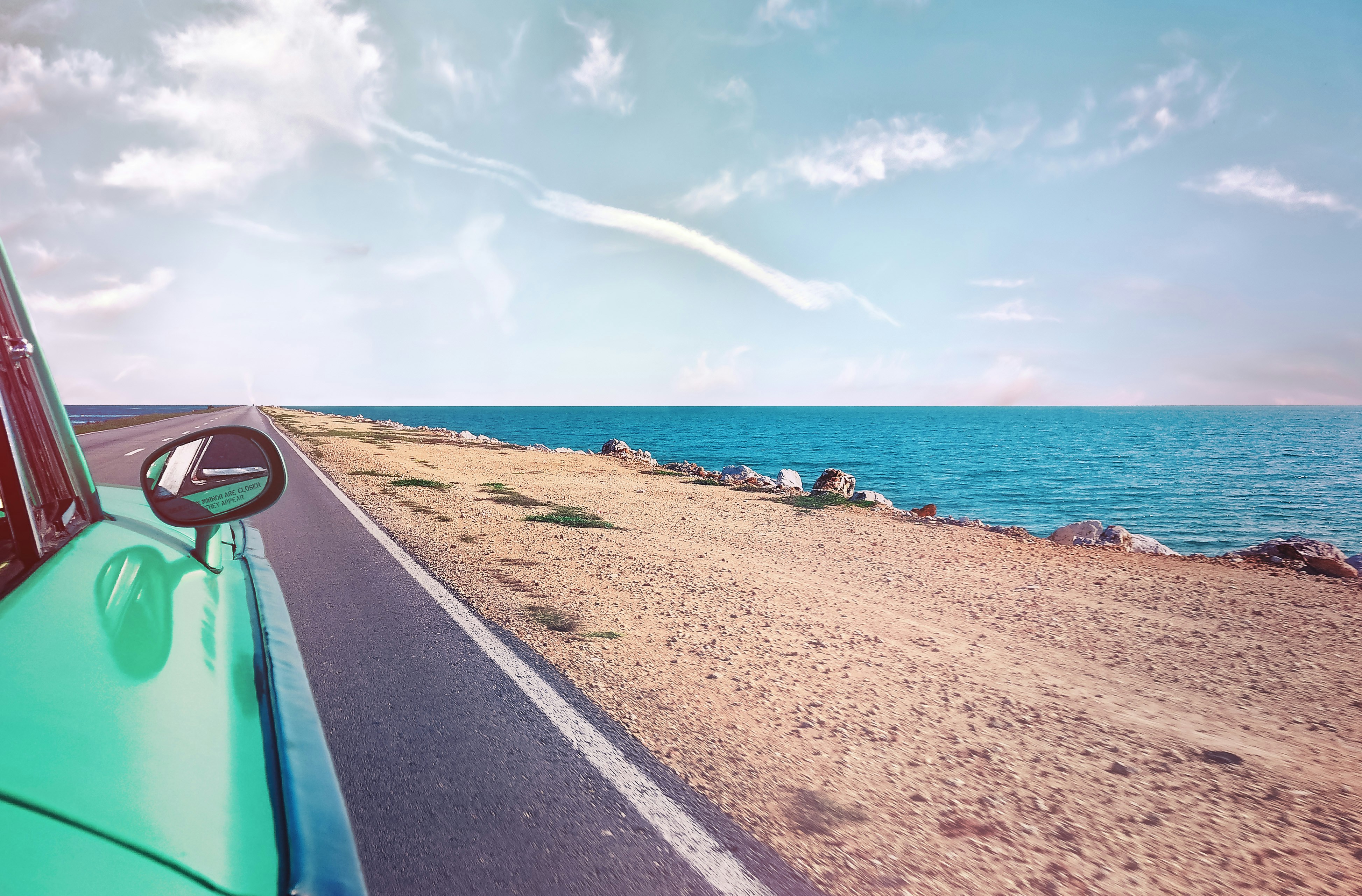Title Tag: Heatwave & Summer Thunderstorm
Heatwaves and Summer Thunderstorms Safe Driving Tips for Midsummer
When the summer sun beats down and thunderstorms build quickly, Swiss roads become more demanding. Heatwaves above 30 °C and severe storms challenge both driver and vehicle. What feels easy in mild weather can turn risky when engines overheat, road surfaces soften, tyres fail and heavy rain brings aquaplaning. With sensible preparation and an adjusted driving style, you can handle even the toughest summer conditions and stay safe.
Why driving in heat is particularly risky
High temperatures stress you and your car. Once the mercury passes 30 °C, your body works harder, concentration dips and reaction times lengthen. Even at around 27 °C inside the cabin, braking and decision-making slow in ways that matter in traffic.
Mechanical parts also suffer. Softened asphalt offers less grip, cooling systems work harder and tyres are more vulnerable to damage. The mix of fatigue and technical strain is what makes hot-weather driving hazardous. The answer is calm, forward-looking driving, realistic self-assessment and planned breaks or driver changes before fatigue sets in.
Typical midsummer risks and how to avoid them
Tyre blowouts in heat and how to prevent them
Heat increases tyre pressure and raises rubber temperatures, especially at motorway speeds. A weakened or over-pressurised tyre is more likely to fail on hot, soft tarmac.
Check pressures in the cool morning and set to the manufacturer’s summer values.
Reduce speed on very hot days and break up long motorway stretches.
Inspect age and condition; older or damaged tyres fail sooner in heat.
Keep at least 3 mm tread for better heat dissipation and wet grip.
Aquaplaning risk during summer thunderstorms
Storms can dump large amounts of water in minutes. Early on, rain mixes with oil and dust, making surfaces extra slippery. Hydroplaning (aquaplaning) happens when tyres ride up on a film of water and lose contact with the road; steering feels light and braking is ineffective.
Slow down as soon as dark clouds gather.
Avoid sharp steering or heavy braking.
If the car starts to float, ease off the accelerator and steer gently where you want to go.
Speed is the key factor - even around 80 km/h, aquaplaning can occur if water is deep enough.
Staying safe in the car during a thunderstorm
A car body acts like a Faraday cage, giving good protection from lightning. Safety still depends on behaviour.
If a severe storm hits, park safely in a car park or service area and wait it out.
Keep windows closed and avoid touching metal parts.
In heavy hail, seek shelter under a roofed area.
After a nearby strike, check lights, indicators and other critical systems before continuing.

Practical tips for safe summer journeys
Plan long trips for early morning or late evening, avoiding roughly 11:00–16:00 when heat peaks. Hydrate with water or isotonic drinks and skip alcohol or sugary soft drinks.
Use air-conditioning sensibly: ventilate the car before setting off, then cool moderately. Aim for no more than about a 6 °C difference from outside temperature, and don’t direct vents at your body.
Schedule a proper break at least every two hours to rest in the shade, re-hydrate and assess alertness. Before longer journeys, check coolant, engine oil and brake fluid; heat can turn a small fault into engine damage within a few kilometres. Pack spare coolant, some oil and jump leads.
Dress for the weather: light-coloured, loose clothing in natural fabrics reduces heat load. Sunglasses and a cap help with glare and eye strain.
Protecting your car from extreme heat
Whenever possible, park in the shade; when storms threaten, prefer covered parking. Use reflective sunshades on windscreen and side windows, and crack windows slightly during longer stops for ventilation.
Avoid unnecessary load and drag. Roof boxes and bike racks increase strain on cooling systems in hot weather. Protect leather seats with breathable covers or light towels to prevent burns after parking.
Keep electronic devices off the dashboard; batteries can overheat. Be aware that older 12-V batteries may fail in extreme temperatures - test and replace if needed. UV radiation also ages paint and rubber seals, so regular waxing and occasional care products for door and window seals help them stay elastic.
Emergency equipment for extreme summer weather
A thoughtful kit can make a real difference:
Distilled water and spare coolant (store out of direct sun)
Isotonic drinks and a few energy-dense snacks
Fully charged power bank
Torch with fresh batteries
Sunscreen, a light blanket or large towel
Personal medications - consider a small cool bag with ice packs
Mastering safe summer driving
Safe summer driving comes down to preparation, realistic speeds and regular breaks. In high heat, choose cooler travel times and carry enough fluids. When severe weather threatens, slow down early and, if needed, pause the journey rather than take risks. With technical checks and anticipatory driving, you can turn challenging conditions into manageable ones and arrive relaxed.
FAQ
How do I prepare my car for longer trips in the heat?Check fluid levels - especially coolant and engine oil - and tyre pressures in the cool morning. On very hot days, moderate speeds and plan more breaks. Sunshades help keep cabin temperatures down.
What should I do when severe weather is forecast?Review forecasts and consider alternative routes. At the first signs of a storm, reduce speed, increase following distance and avoid abrupt inputs. If conditions worsen, find safe shelter and wait in the car.
How do I protect my car from strong sunlight?Favour shaded or covered parking. Use sunshades and slight window ventilation during longer stops. Protect leather with light covers and keep electronics off the dashboard.
What belongs in a summer emergency kit?Spare coolant, distilled water, jump leads, isotonic drinks, first-aid kit, sunscreen, a charged phone and power bank, plus snacks, a torch and a high-visibility vest.